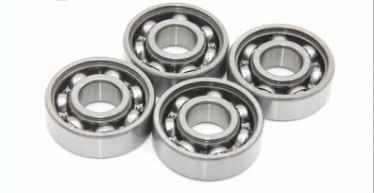Home / News / Precision Spindle Bearings: Types, Features, and Applications
Precision Spindle Bearings: Types, Features, and Applications
Introduction
Precision spindle bearings are specialized bearings designed to provide exceptional accuracy, high-speed capabilities, and reliability in a wide range of applications. These bearings are essential components in various types of machinery, such as CNC machines, milling machines, and lathes, where precision and performance are critical. This article will discuss the types of precision spindle bearings, their features, and their applications in different industries.

Types of Precision Spindle Bearings
There are several types of precision spindle bearings commonly used in high-precision applications, including:
Angular Contact Ball Bearings
Angular contact ball bearings are designed to support combined axial and radial loads, with the contact angle determining the bearing's load-carrying capacity. These bearings are typically used in high-speed applications and provide excellent axial stiffness and low friction.
Tapered Roller Bearings
Tapered roller bearings consist of conical rollers and raceways, allowing them to support high radial and axial loads. These bearings are known for their high stiffness, making them suitable for applications with high axial loads or high-speed operation.
Cylindrical Roller Bearings
Cylindrical roller bearings are designed to support high radial loads and can accommodate some axial loads. These bearings are known for their high load-carrying capacity and low friction, making them suitable for high-speed applications with predominantly radial loads.
Hybrid Bearings
Hybrid bearings combine the use of steel raceways with ceramic rolling elements, resulting in lower friction, higher stiffness, and increased resistance to wear and thermal expansion. These bearings are ideal for high-speed applications, where their unique properties provide performance benefits over traditional bearing materials.
Features of Precision Spindle Bearings
High Accuracy
Precision spindle bearings are manufactured to tight tolerances and feature superior surface finishes, ensuring high accuracy and minimal runout during operation.
High-Speed Capabilities
The low friction and optimized internal geometry of precision spindle bearings allow them to operate at higher speeds compared to conventional bearings, making them suitable for high-speed machining and other demanding applications.
Rigidity and Load Carrying Capacity
Precision spindle bearings are designed to provide high axial and radial stiffness, enabling them to handle the demanding loads and forces encountered in precision applications.
Long Service Life
The use of high-quality materials, tight manufacturing tolerances, and specialized lubrication systems contribute to the extended service life of precision spindle bearings, reducing maintenance requirements and downtime.
Applications of Precision Spindle Bearings
Precision spindle bearings are used in a variety of industries and applications, including:
Machine Tools
CNC machines, milling machines, lathes, and grinding machines all rely on precision spindle bearings to ensure accurate and high-speed operation.
Metrology and Inspection
Precision spindle bearings are used in coordinate measuring machines (CMMs), optical inspection systems, and other high-precision measurement equipment.
Robotics and Automation
The high accuracy and reliability of precision spindle bearings make them well-suited for use in robotic arms, positioning systems, and other automated machinery.
Aerospace and Defense
Precision spindle bearings are used in various aerospace and defense applications, such as guidance systems, avionics, and high-precision manufacturing processes.
Conclusion
Precision spindle bearings are essential components in a wide range of applications where accuracy, high-speed performance, and reliability are critical. By understanding the different types of precision spindle bearings, their features, and their applications, engineers and manufacturers can select the most suitable bearing for their specific needs, ensuring optimal performance and extended service life.
- Previous: Air Bearing Spindle: Principles, Advantages, and Applications
- Next: Spindle Bearing Grease: Selection, Application, and Maintenance











